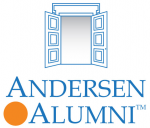BYU
study: 20 years later, accountants burned by Enron scandal outperform peers
By Christie Allen, BYU Writer
This article was first published
by BYU and has been reprinted with their permission
After the Enron scandal broke in
2001, Arthur Andersen — the accounting firm Enron had hired to audit the
company’s financial statements — was investigated by the Department of Justice.
Arthur Andersen quickly collapsed, and even though most of the firm’s 85,000
partners and staff weren’t directly responsible for what happened, they lost
their jobs, their wealth tied to the company and their good reputations.
But in the long run, at least some
of Arthur Andersen’s former auditors may be better off for the experience.
In a recent study, BYU Marriott
School of Business accounting professor Tim Seidel and colleagues at other
universities found that partners who worked at Arthur Andersen during its
demise now provide higher quality audits than their peer partners at other
accounting firms who did not.
Previous research has shown that early
life experiences shape how CEOs later manage companies. Seidel’s team wanted to
see if the same was true for Arthur Andersen employees. “How might watching
your firm implode affect these auditors’ work 15 to 20 years later?” Seidel
asked.
To find out, the team compared recent
audits by 199 former Arthur Andersen employees — who are now partners in Big 4
accounting firms PwC, Deloitte, KPMG and Ernst & Young — to recent audits
by 1,446 of their peers.
The researchers used three proxies
that correlate with audit quality and found consistent evidence that former
Arthur Andersen auditors appear to provide higher quality audits. Just 0.8% of
their clients later issued financial restatements to correct mistakes that
weren’t caught in the original audits, compared to 2.3% for peers’ clients. The
propensity to report small profits (a sign that a company is manipulating
earnings to avoid reporting a loss) was 12% for former Arthur Andersen
employees’ clients compared to 14.8% for the others’ clients. Clients of former
Arthur Andersen auditors also paid 4.4% higher fees, which indicates that the
auditors invested more hours in verifying financial statements.
Seidel believes that former Arthur
Andersen auditors are driven partly by a desire for redemption.
“Even today when Arthur Andersen is
mentioned in accounting circles, there’s always a joke about shredding
documents,” he said. “Former Andersen partners feel the salience of the
collapse more. There’s an element of reputation-building and trying to reverse
the stigmas attached to them. I’ve seen that come out as I’ve talked to people
who worked there during the scandal.”
Former Arthur Andersen auditors may
also do better work now because they know exactly how badly things can go when
auditing gets sloppy or corrupt. They’re less likely to be swayed by clients’
pressure to approve financial statements and more likely to gather sufficient
evidence before offering judgments.
“In our study, auditors who
experienced Andersen’s demise firsthand developed greater professional
skepticism, which plays a critical role in identifying potential misstatements,
whether due to fraud or errors,” said Iowa State University professor Feng Guo,
a co-author of the paper.
The research can provide valuable
insight to accounting firms as they make hiring, training and assignment
decisions.
“A lot of times auditors associated
with offices who have done bad audits are seen as inferior, that there’s a
contagion effect. This study shows that you should be careful about such
judgments,” Seidel said.
“Our research suggests that
auditors learn from their experience,” added co-author Ying Zhou, a professor
at the University of Connecticut. “So audit firms could explore ways to
simulate audit failure in auditor training.”
Seidel said that the research has
implications beyond the realm of accounting, too. “As we’re dealing with people
and trying to understand them, it’s good to remember that extreme experiences
in their past really shape how they view the world and what they do.”
The paper was published in the journal Contemporary Accounting Research and was additionally co-authored by Ling Lei Lisic of Virginia Polytechnic Institute and State University, Jeffrey Pittman at Memorial University of Newfoundland and Mi Zhou at Virginia Commonwealth University.
